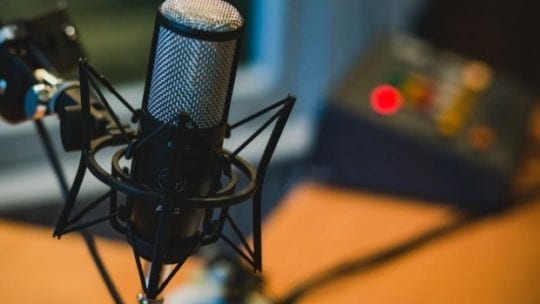
Podcasts have been a runaway success for businesses looking to further engage their audience. From their mobility to their relative brevity to their status as (mostly) free to users, podcasts are pulling in new listeners on a daily basis.
If you’ve ever thought about starting one, now is the time.
And here are four things you'll need to get your podcast started.
Planning. When you started your business—no matter how small or large—you devised a business plan. Launching a podcast is no different.
Identify what your podcast is about and who your podcast is for. Who is the audience you're trying to reach? As you launch the podcast, you are establishing yourself as an authority on a certain subject. Maybe you’re a hobbyist who likes model trains, or a nutritionist looking to inform listeners on good eating habits, or perhaps you’re a music buff who thinks the ‘70s were the greatest decade ever.
Plan out the first three to six episodes of your podcast. Most ventures are filled with good intentions but peter out after the first couple of episodes when the host struggles to come up with a topic.
Branding. Your podcast should have a clever name and a great URL. Simply calling it “The John Doe Show” isn’t branding if you’re not already a brand name yourself. Calling it “The Model Train Podcast” isn’t snappy, either. It’s practical, sure. But remember, you’re going to be using this name dozens of times in each episode you record. Think fun, think play on words. If your podcast is about sports, maybe “The Armchair Quarterback,” which leaves no doubt the show is about sports and, as the saying ‘Armchair Quarterback’ implies, is about fans sitting at home breaking down the game from their sofas.
Equipment. Arguably, the most important aspect of a podcast.
“You can have the best content in the world, but if it doesn’t sound great people aren’t going to listen to you that long,” said Pat Flynn. Flynn is a digital entrepreneur famous for his video tutorials on how to grow online businesses. He’d be the first to convince you that every microphone has a different sound. So while you might want to keep expenses down initially and use the built-in microphone on your computer, Flynn uses the Heil PR40 for his podcasts, a mic that runs around $300.
As your business grows, you might want to think about an investment in an upgrade—and that includes your editing software.
John Palumbo, CEO of BigHeads Network, creates and produces podcasts for corporate clients like American Express, Keurig and PepsiCo, so sound quality is at a premium for him.
“I need to make sure the sound quality is top-notch and not just from my end, but my "guests" as well, who most of the time are in another location,” Palumbo said.
To that end, Palumbo uses an Audio Technica broadcast headset and a Behringer Xenyx soundboard hooked into his MacBook Pro.
Guests can call in via Skype and the sound can be recorded. Palumbo said he sends every guest a Sennheiser headset that plugs into their computer's USB port to ensure the sound on their end is high-quality as well.
With Macs, both men use GarageBand as their editing software, although one of the best—Audacity—is a free download.
Extras. If you want to enhance your podcast, think about some extras. Intro and outro music would be great, and there are websites where you can pay a modest fee to download music without paying for a licensing/royalty fee. In addition, cover art for your podcast would be ideal.
